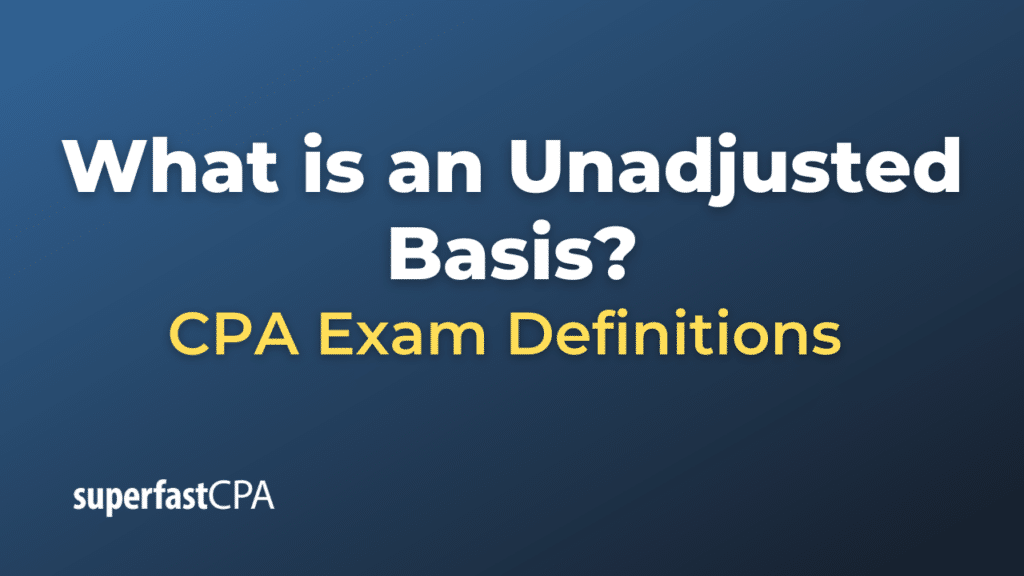Unadjusted Basis
An “unadjusted basis” refers to the original value of an asset for tax purposes, before any adjustments for things like improvements, depreciation, or other factors that could alter its value over time. For real estate, for example, the unadjusted basis typically includes the property’s purchase price and some of the acquisition costs, such as legal fees, title fees, and surveying costs.
In a tax context, an asset’s basis is important for determining gain or loss when the asset is sold. The basic formula to determine this is:
Gain or Loss = Selling Price – Adjusted Basis
Where the “adjusted basis” might differ from the “unadjusted basis” due to factors like those mentioned above.
Example of an Unadjusted Basis
Let’s explore the concept of “unadjusted basis” through a simple example involving real estate:
Example: Buying a Home
- Purchase of the Home:
- Calculating the Unadjusted Basis:
- The unadjusted basis of the home is the original cost of the home plus the associated acquisition costs.
Unadjusted Basis = Purchase Price + Closing Costs
Unadjusted Basis = $200,000 + $5,000 = $205,000
So, your unadjusted basis in the home is $205,000.
- The unadjusted basis of the home is the original cost of the home plus the associated acquisition costs.
- Making Improvements:
- A year later, you decide to add a new room to the home, which costs you $20,000.
- This addition increases the value of the home, but it does not alter the unadjusted basis. Instead, it affects what we’d refer to as the “adjusted basis.”
- Calculating the Adjusted Basis:
- The adjusted basis takes into account the original unadjusted basis plus the cost of improvements.
Adjusted Basis = Unadjusted Basis + Cost of Improvements
Adjusted Basis = $205,000 + $20,000 = $225,000
So, after the home improvement, your adjusted basis in the home is $225,000.
- The adjusted basis takes into account the original unadjusted basis plus the cost of improvements.
- Selling the Home:
- A few years later, you decide to sell the home and manage to get a selling price of $270,000.
- To determine your taxable gain:
Taxable Gain = Selling Price − Adjusted Basis
Taxable Gain = $270,000 − $225,000 = $45,000
You would potentially owe taxes on the $45,000 gain, depending on various tax rules and exemptions in place at the time.
In this example, even though the home was sold for a gain of $65,000 above the original purchase price ($270,000 – $205,000), due to the improvements made, the taxable gain was only $45,000.













